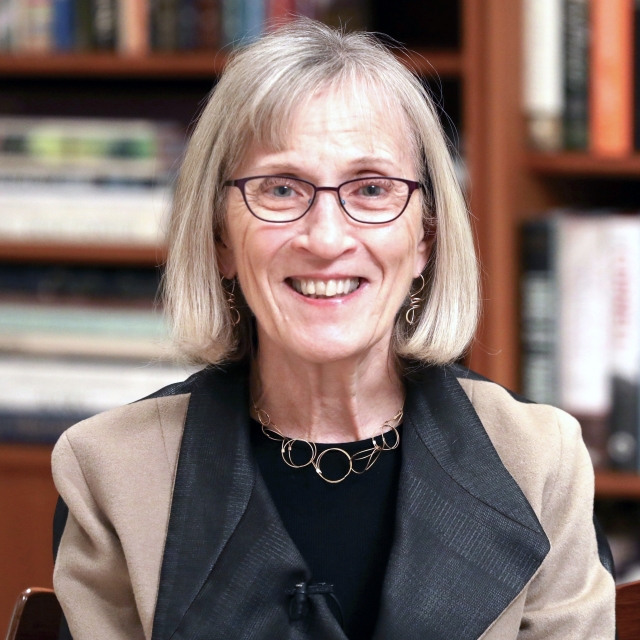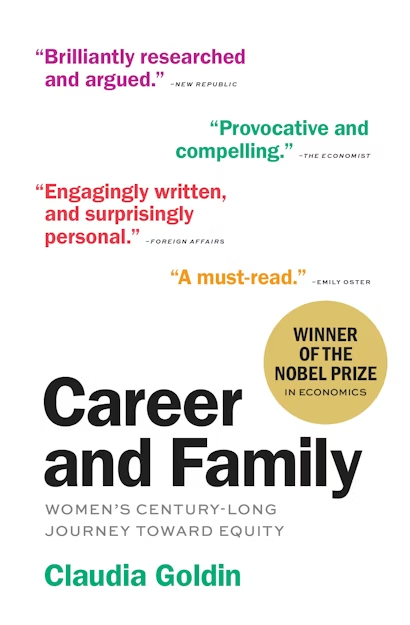A century ago, it was a given that a woman with a college degree had to choose between having a career and a family. Today, there are more female college graduates than ever before, and more women want to have a career and family, yet challenges persist at work and at home. This book traces how generations of women have responded to the problem of balancing career and family as the twentieth century experienced a sea change in gender equality, revealing why true equity for dual career couples remains frustratingly out of reach.
Your book is about the aspirations of women for career and family, today and in the past. Let’s begin with the obvious: Will there ever be “equity” for women?
CG: Equity is often defined to mean equal earnings for men and women in the same job or between comparable individuals. At the rate we have been going, some calculate that this type of equity will not be achieved in anyone’s lifetime. That isn’t a hopeful answer. But, rather than take the current circumstances as given and extrapolate, we have to understand what causes this inequity. The gender earnings gap, as it is called, is a lot more than a difference in earnings.
Inequity is in two spheres: that of career and that of family. They are two sides of the same coin. If we can achieve equity within families, we will have a much better chance of achieving gender earnings equality at work. The reason is that children take time. Careers take time. If women do more of the childcare (and household maintenance and eldercare), then they have less time for their careers. They put in fewer hours, they take less demanding jobs and, in consequence, they earn less.
Inequities in caregiving are rooted in history, family norms, and individual preferences. But, even couples who would like to have 50-50 relationships can’t. The reason is “greedy work.”
So, the gender earnings gap is largely emerging from outside the workplace but is reinforced and widened by factors termed “greedy work” within the workplace. What do you mean by “greedy work”?
CG: The employee who is willing to work at all hours and the one who is on-call at the office is the worker who gets the big rewards. These rewards are disproportionate to the time put in. Doubling the time, far more than doubles the earnings. That is what we call “greedy work.” If an individual has children or some other family responsibilities, someone has to be on-call at home, even if that person has a job. The on-call at home person will take a position that has more flexibility and is less demanding and, in consequence, pays less even on a per hour basis.
Women are generally the ones who are on-call at home. Thus, the flip-side to gender inequality is couple inequity. Even same-sex couples with children encounter a strong pull toward specialization and often jettison couple equity. Why can’t dual-career families share the joys and duties of parenting equally? They could, but if they did, they would be leaving money on the table, often quite a lot. The 50-50 couple might be happier, but would be poorer.
The route out of these inequities is to lower the cost of workplace flexibility and childcare. The first may be happening with workplace changes that have occurred during the pandemic and the second is gaining political momentum. Bringing the men along in a host of ways is another part of the solution.
Let’s return to the gender earnings gap, about which so much has been written. Can you demystify the concept for me? It is often said that women earn 82 cents on the male dollar. What does that mean?
CG: Women earn less than men, on average. The ratio of the median full-time women’s to men’s weekly earnings is referred to as the gender earnings gap. The ratio for all workers narrowed considerably from the early 1960s until today, and is currently around 0.8. But the actual difference is considerably more since women with young children often cut back their hours and the ratio uses median weekly earnings for full-time workers.
Because my book is about success in achieving career and family, it is mainly about college graduates, who today are nearly a majority of young women. The gender earnings gap is small right after college or professional school, but it later widens, especially after a woman has a child. It is larger in certain occupations than in others and is bigger in occupations that put greater value on longer, irregular, and on-call hours. Working mothers are “on-call at home,” whereas working fathers are “on-call at work.”
Are you saying that the workplace is neutral and equitable in its treatment of women relative to men or Blacks relative to whites?
CG: No. I’m not saying that the economic marketplace is free from bias. We should wipe out all forms of inappropriate treatment and discrimination in the labor market. But even if we did, there would still be large differences in the earnings between men and women.
Why should we take a “century-long journey” rather than skip the history and concentrate on present issues regarding career and family?
CG: Knowing the barriers that stood in the way and came down makes us more aware of current impediments. More important, it teaches us that there has been enormously large, positive changes and shows us why. Many of the most important factors that have led to these changes were outside the political and governmental arenas and involved technological developments, such as those that increased the demand for brain power rather than brawn in the marketplace. But some were tinged with government control. One important change was the invention of the birth control pill. But unmarried women in many states could not legally obtain the Pill for a decade after its approval by the FDA. The Pill had an enormously large impact on the ability of women to get advanced degrees and professional training and then later have a family.
That is why the book takes a century-long journey from the time when college graduate women could have a career or a family to when they aspired to have both. The desire among college-graduate women for career and family has been long in the making. We can best understand these developments by examining the five groups of college-graduate women born since the late nineteenth century, each of whose trajectory was informed by that of the group before it. Collectively, these women’s lives trace out one of the most consequential evolutions in social and economic history.
How has the pandemic magnified the issues that were always part of the journey?
CG: Having a career and a family has always been a challenge for women but became more so during the pandemic when schools were closed and daycares shuttered. Childcare and home schooling time greatly increased. Much of the increase was borne by women. But, in two-parent, heterosexual families father’s childcare time also greatly increased.
At no point in the history of this nation, save WWII, has the work of women been more critical to the economy. At no point has the increased burden of childcare due to the closing of schools and daycare been more important to their careers. The pandemic has made everyone realize the importance of childcare to the economy. Reducing the costs of caring for children, even as public schools become full-time again is another critical way to even the gender playing field.
In addition, work from home (WFH) may have reduced the costs of flexibility. We do not yet know whether our year of exile has brought about changes in the workplace that will persist and that will bring down the cost of workplace flexibility. It appears to have.
Your book is described as lively and entertaining, yet you are an economist and there is considerable statistical evidence in the book. Give me a sense how you weave together the personal stories, the popular culture, and the hard evidence.
CG: Thanks. I do think it is livelier than most books written by economists. Lots of famous people, real and fictitious, make cameo appearances, like Mary Richards (aka Mary Tyler Moore), Lilly Ledbetter, Tiny Fey, and Kamala Harris. I take Betty Friedan to task for not recognizing the progressive role played by the women in the Feminine Mystique. There are many stories of pioneers such as Sadie Mossell Alexander, the first Black woman to get a PhD in economics only to be stymied in landing a professorial job, and Jeannette Rankin, the first woman elected to federal office. Less well known are teachers Anita Landy and Mildred Basden who, in the 1940s, challenged marriage bars in teaching and won.
Career & Family is less about firsts and more about affirmative change that has endured. Yet, it acknowledges that gender inequity is still around and is not a simple problem that government, via taxes and mandates, can fix. Nevertheless, there is a role for government in making the caring economy easier for its hardest working members.
A problem that has been with us for as long as gender inequity has, doesn’t have a quick and easy solution. But knowing the cause is a beginning.
Claudia Goldin is the Henry Lee Professor of Economics at Harvard University. Her books include Women Working Longer, The Race between Education and Technology, The Defining Moment, and Understanding the Gender Gap. She lives in Cambridge, Massachusetts. Twitter @PikaGoldin

